E m o r y U n i v e r s i t y and O x f o r d C o l l e g e
The University's new
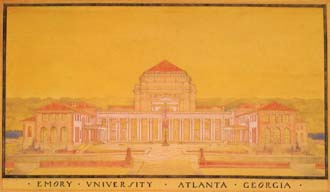 "framework for physical development"
emphasizes balance, stewardship, and harmony
"framework for physical development"
emphasizes balance, stewardship, and harmony
Henry Hornbostel's original campus design included a massive central library and colonade, which were never completed.
Courtesy Special Collections
E m o r y U n i v e r s i t y
The Master Plan
When architect Henry Hornbostel designed the new campus for Emory University in 1915, he did so with sensitivity to the site and the city and with both innovation and respect for the past. Although Emory never fully built all that Hornbostel designed, his vision guided the development of every construction project the University undertook for the next fifty years.
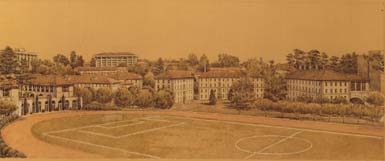
A projected view of the athletic fields
As often happens when the founding generation passes on, the plan for Emory's campus fell victim to the whims of fashion and the demands of an increasingly complex institution. The University did not always build with a proper sense of its architectural heritage or a view to the best use of its finite acreage. In the fall of 1996, Emory engaged the firm of Ayers/Saint/Gross to create a new vision of the University. They met with scores of groups and hundreds of individuals and researched Emory's history, topography, vegetation, roadways, traffic and parking, classroom use, and architectural hits and misses. The results of their work appear on this page.
(Below) A projected view of the Emory campus in 2050
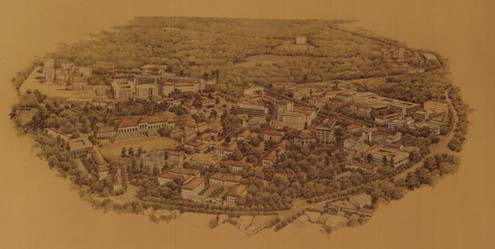
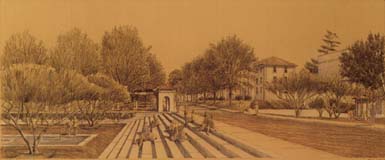
A projected view of Asbury Circle near the Dobbs University Center
This plan marks a new beginning for the campus. When followed, the plan will build a new sense of intellectual community commensurate with the extraordinary spirit, culture, and mission of the University.
Adam Gross, Ayers/Saint/Gross
Illustrations courtesy Ayers/Saint/Gross
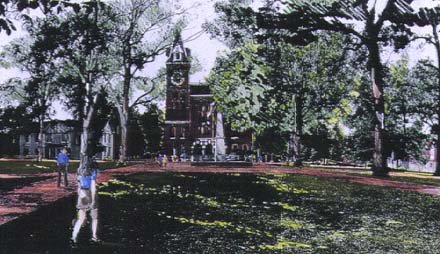 A projected view of Seney Hall and the Oxford Quadrangle
A projected view of Seney Hall and the Oxford Quadrangle
The Master Plan
Oxford College is a "community of learning" whose approach to education is derived from a unique combination of interpersonal relationships, its historic heritage, its campus, and its community. These aspects of Oxford's character form the guidelines for future planning to create a residential college with an environment that promotes intellectual achievement and human interaction.
The rich heritage of campus development at Oxford College should inform
all future planning. Decision-making should always reference the integrity
of the original college and town layout and preserve the scale and character
of historic buildings and the natural environment. New buildings should
be located to reinforce the spatial qualities of the existing Quadrangle
or define new 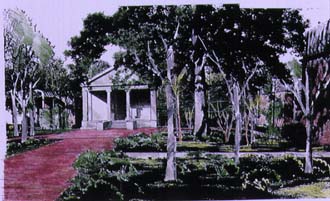 spaces on campus.
spaces on campus.
While a special academic identity should be maintained, connections to the community should be emphasized and strengthened.
A projected view of Phi Gamma Hall
Return to Summer 1998 contents page